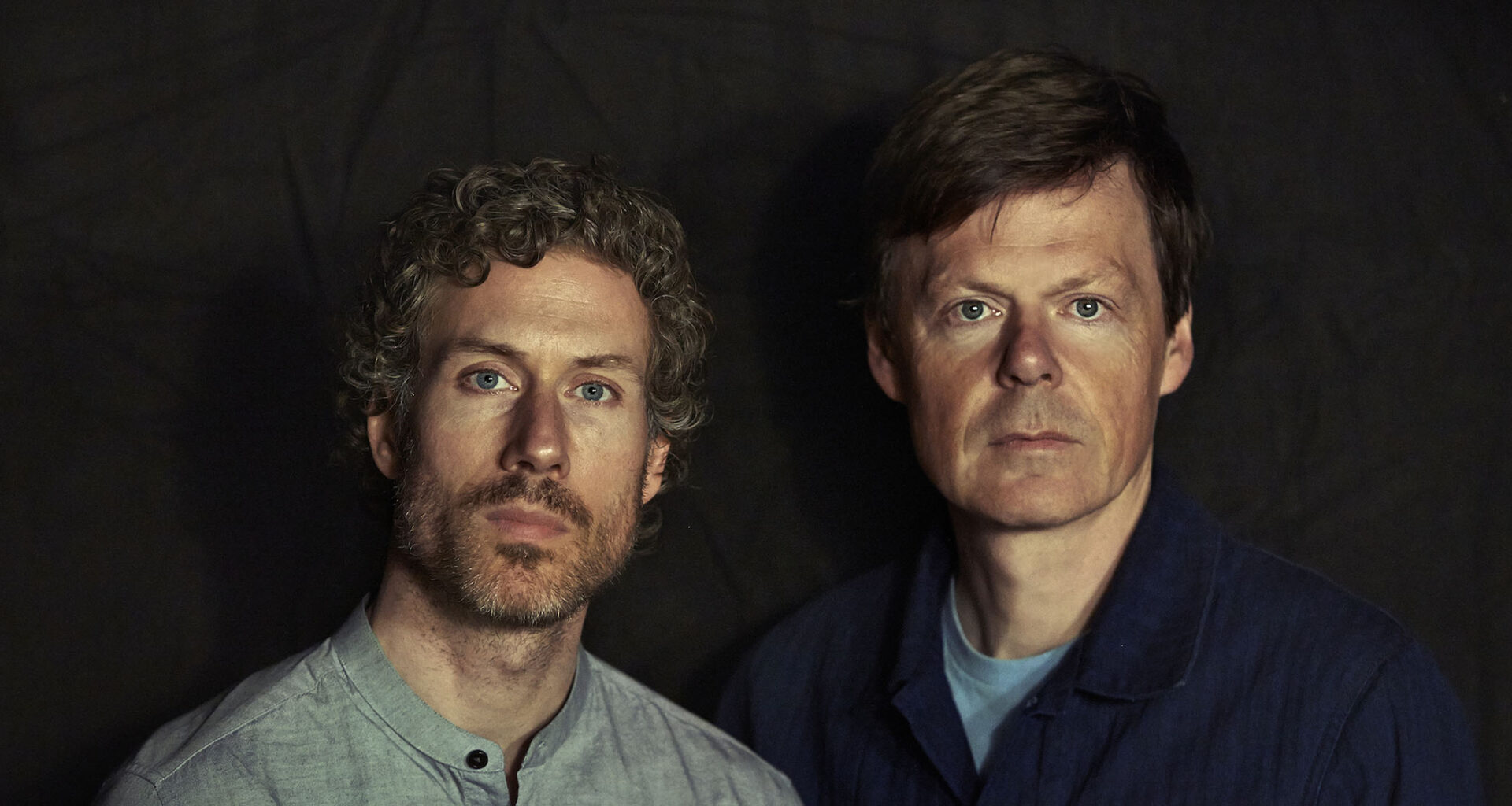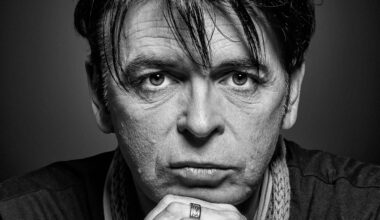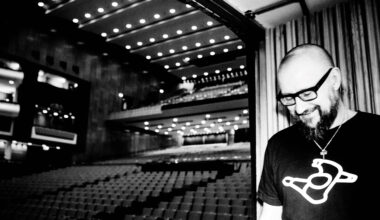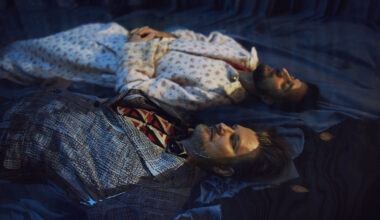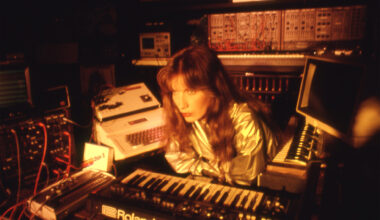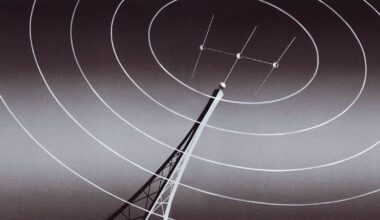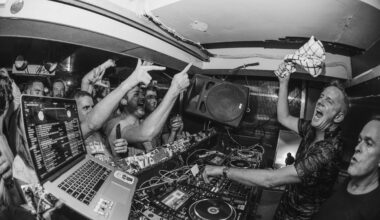Stefan Schneider and Sven Kacirek have crafted a unique electronic album based on a series of field recordings taken in some of the most remote parts of Kenya. Get set for the opulent synth tones and African-influenced rhythms of Schneider Kacirek’s ’Shadows Documents’
Music genres always find new ways to mutate and develop. Hip hop was born out of rap and turntablism; house music sprung from the ashes of disco, mixed with 50s and 60s soul. Yet through the passage of time, invention (never mind reinvention), becomes increasingly difficult, even within the exploratory domains of electronic music.
Thankfully, some artists still have enough sense of adventure to seek out new pathways, to countenance a new syntax. They may use the same technology and techniques to chronicle their art, but the heart and mind that yearns to investigate and seek out alternative forms of musical expression holds the key to the unlocking of fresh generic templates. One such artist is Stefan Schneider, founder member of neo-krautrock band Kreidler and experimental techno act To Rococo Rot.
Schneider’s latest enterprise is Schneider Kacirek, which sees him teaming up with fellow German musician Sven Kacirek, a drummer and percussionist who studied at the famous Drummers Collective in New York. Kacirek has composed and performed many modern dance theatre and contemporary ballet pieces in Germany, as well as releasing three solo albums. Between the two of them, they have a history of collaboration with respected patrons of the avant-garde, most notably Hans-Joachim Roedelius (ex-Cluster and Harmonia), Klaus Dinger (ex-Kraftwerk and Neu!), electro-classical experimentalist Nils Frahm, and esteemed world music session players such as Bill Wells and Marc Ribot.
As Schneider Kacirek, the pair utilise their experience in innovative electronics to create potent abstractions via the union of dark synth play and African rhythms. The result is ‘Shadows Documents’, one of the most evocative albums you’ll hear in a long time.
“It was quite an organic process that brought Sven and I together,” says Stefan Schneider. “We met each other some years ago in Hamburg and Sven asked me to join a research project to make audio recordings of traditional folk music in Kenya initiated by the Goethe-Institut in Nairobi.”
Under the patronage of the Goethe-Institut (the worldwide German cultural association) and UNESCO, Schneider and Kacirek travelled to Africa in September 2011 and spent several weeks making field recordings of traditional Kenyan music in numerous rural and coastal locations. This was the first time that Schneider had travelled to a Sub-Saharan country, but Sven Kacirek was no stranger to Kenya. He initially visited the country in 2008.
“I went to Kenya for the first time after a choreographer from Hamburg asked me to create the music for a contemporary dance piece that was premiered in Nairobi,” explains Kacirek. “One year later, I went back to go up-country, meeting with singers and musicians like Ogoya Nengo, Ogada Oganga, Salim Mwatela and Owino Koyo. Since then, I‘ve been back to Kenya three more times to make field recordings with Stefan.”
The material Schneider and Kacirek recorded was subsequently released on two albums, ‘Mukunguni’ and ‘Rang’ala’, both on Honest Jon’s Records. They were named after two of the villages they made recordings in.
“We stayed for about a week in Mukunguni, which is near Malindi, north from Mombasa,” says Schneider. “We recorded a group of Mijikenda people, who play a rare form of percussion during healing ceremonies for mentally ill people.”
‘Mukunguni’ features folk music from highly rural villages. Almost taking the form of free jazz, it explores the intricate use of melodies and rhythms played in polyphonic accents, sounding not too dissimilar to “talking drums”, which are designed to chase away Pepo Mlume, the devil who poisons the imagination. It includes various local instrumentation, such as Sengenya drums – bumbumbu, dahdahe, chapuro, vumi and ngoma – and other local instruments, including the lungo and dena (metal rings), kayamba (raft rattle), njunga (bells), ukaya (metal tray) and bamba (metal guiro), as well as the rather more prosaic bottle-tops.
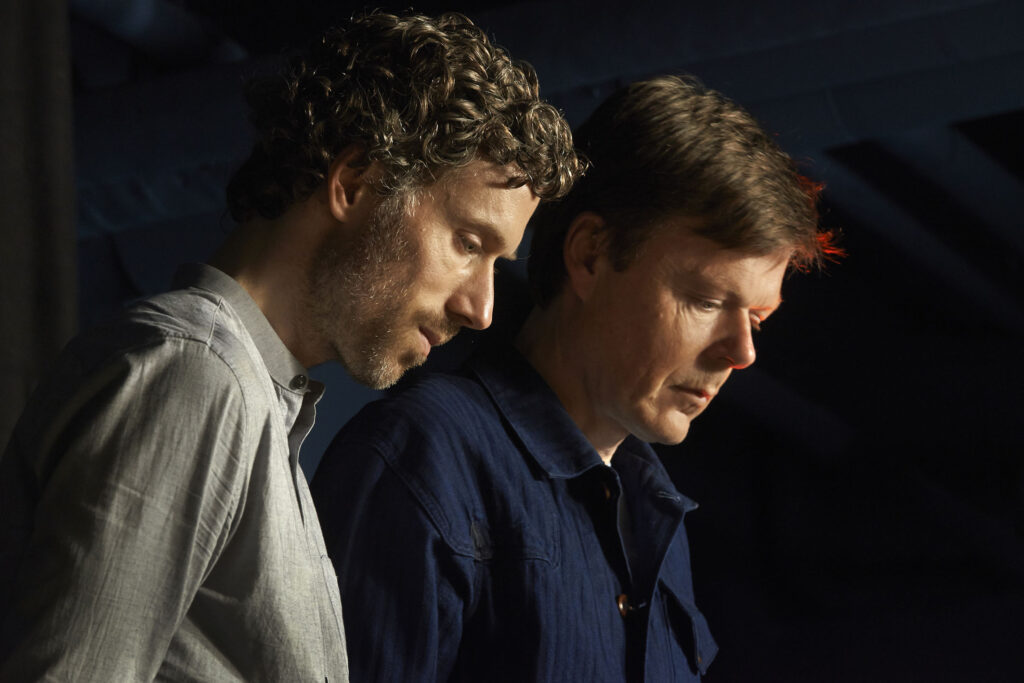
The experience of overseeing the recording of ‘Mukunguni’ and ‘Rang’ala’ fuelled the German musicians’ decision to record together as Schneider Kacirek and to use their African adventures as the starting point for their first release as such. And as Schneider points out, ’Shadows Documents’ finds the pair getting a lot more hands-on.
“On ‘Mukunguni’ and ‘Rang’ala’, we were just recording engineers and we didn’t contribute anything as participating musicians,” he explains. “Schneider Kacirek is a project in its own right, though. It’s also interesting for us because, technically speaking, it has nothing to do with our own music.”
‘Shadows Documents’ is a deeply exotic collection of analogue synth-based instrumentals. It’s an out-and-out electronic record – however hard you listen, you won’t hear the merest trace of an acoustic instrument – but the original material for the album was sourced in Kenya. Schneider and Kacirek returned there in 2013, intent on travelling to new areas of the country and making more field recordings.
“Most types of folk music in Kenya are played by older musicians,” says Schneider. “We did recordings of singer Ogoya Nengo, for instance, who is in her 70s. Unfortunately, the young people would rather listen to hip hop or other forms of pop music. The fact that young people grow up in rural regions yet leave their families in order to find jobs and education in the bigger cities also plays a role.”
“It was very important for us to learn why and how the music is performed in the villages,” adds Kacirek. “It was far more interesting to record these musicians at the spots where the music originated and is played even up until today. If we had recorded Ogoya Nengo in a professional studio in Nairobi instead of recording her in Rang’ala village, it would have become a totally different record.”
“One of the places we travelled to was Siaya County, which is north from Lake Victoria,” says Schneider. “A friend of ours, George Odhiambo, introduced us to the music of the Luo people who live around the lake. Going to these villages to meet and hear the musicians that are exploring the various different styles of Luo or Mijikenda music, like dodo, maranga or ohangla, also gave us a chance to witness the social gatherings that are central to their playing. It is predominantly the music itself that excites us, of course, but there’s also the social and political backgrounds of the songs, and finding out about those gave us a lot of insight into the meanings of the music and the lyrics.”
With today’s sophisticated equipment, one would imagine there would be little impediment to storing the field recordings they made onto some sort of electronic device. In Kenya, however, the technology that we take for granted is not always so readily available or easy to set up. Did they run into any problems in sourcing the material?
“We had to use battery-driven recording equipment, as there is no electricity in most places,” notes Schneider. “All of the recordings were done with two unsynchronised ‘zoom’ digital recorders that have two internal and external microphones. In fact, we did eight-track recordings because it’s easier to shift those two-by-four tracks to one position on the computer; it enables them to run in perfect tempo. The external mics we used, primarily for the voices and drums, were the Sennheiser MD 421 and Shure SM 57/58, or the Beta models of the same type. We also used some battery-driven preamps built by a wonderful engineer in Düsseldorf.”
Back in the studio in Germany, Schneider and Kacirek transmuted their acoustically assembled impressions into a pure electronic form. The result is a haunting and mysterious nine-track album, full of authentic percussive ambience blended with opulent synth tones and dark beats. But this is where ‘Shadows Documents’ differs from other krautrock collaborations on which drum rhythms take the dominant role. Instead, Schneider and Kacirek used various techniques to modify the drums sounds into synthesiser-style instruments, welding the percussive and synth elements together to create something really quite unique. Indeed, this “mutation” of drum sounds into synth sounds was a central element of the recordings.
“All of the drums on the album were played by Sven,” clarifies Schneider. “He is fantastic in tuning his drums in a very quick time. It was our idea to have the drums tuned and played in a way that they almost sound like electronic sounds, whereas the synths that I am playing have a lot of rhythmical qualities.”
“It was not a technical process because I’m very much interested in playing drums in a way that it does not sound like a rock kit or a jazz set,” says Kacirek. “I like it when the sound of the acoustic drum kit merges with the synth sounds in a way that it is difficult to figure out which sound belongs to the kit and which belongs to a synth. It is a question of tuning, different techniques and, of course, amplification.”
‘Shadows Documents’ can perhaps be compared to similar genre explorations by renowned krautrock pairings such as Michael Rother/Klaus Dinger and Dieter Moebius/Mani Neumeier. But however successful this experiment is, Stefan Schneider and Sven Kacirek feel there is a lot more to come from them.
“‘Shadows Documents’ is our first album and like most debut albums it perhaps carries a little too much information,” notes Schneider. “We’re very much looking forward to playing live and developing our own style. Basically, we wanted to introduce a certain type of music, but one that still carries a lot of sounds that you would usually find in dance music productions. So while the inspiration for this album came from Kenya, the 808 and the 303 are still used on almost every track.”
‘Shadows Documents’ is released on Bureau B
